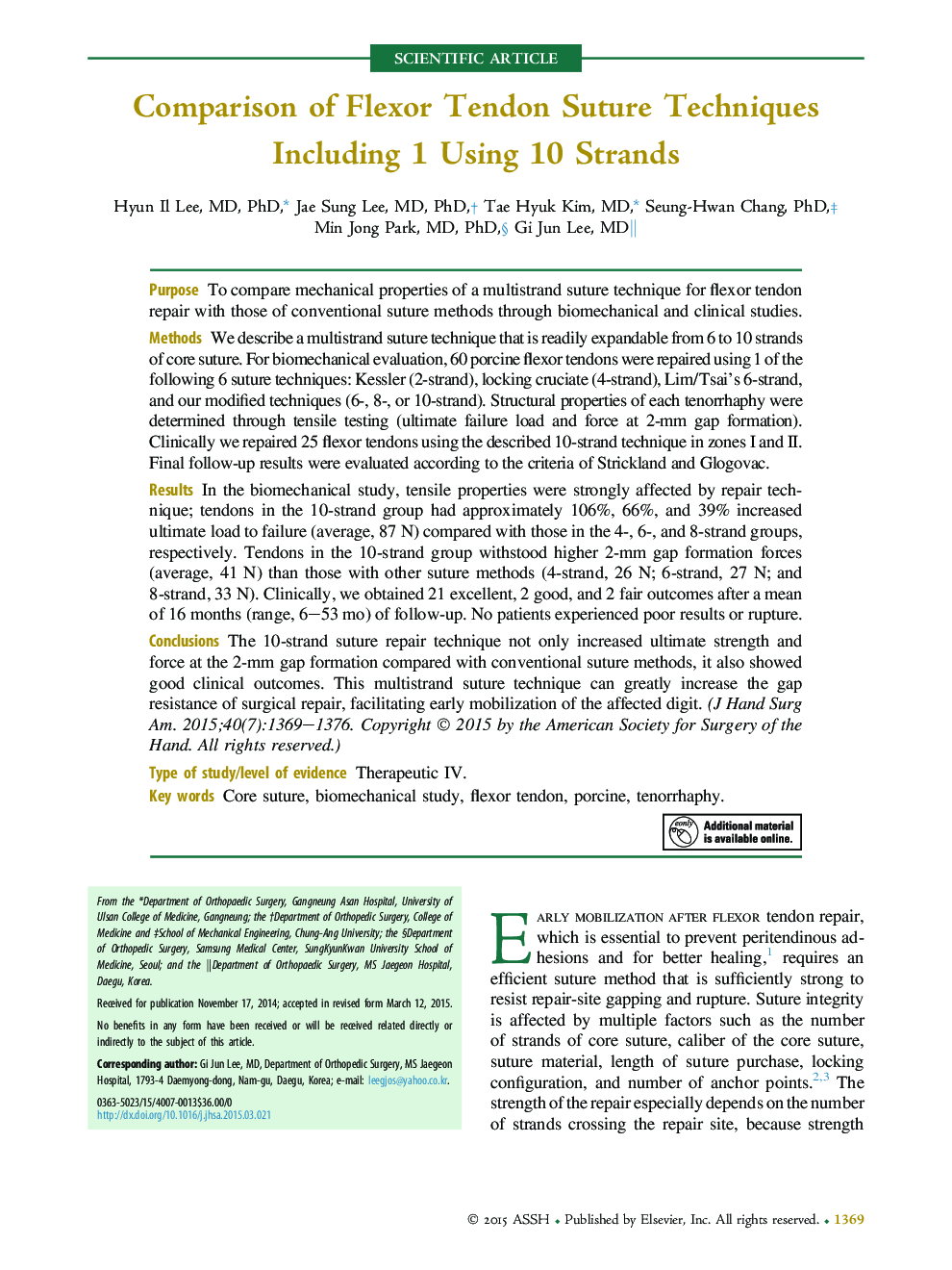| کد مقاله | کد نشریه | سال انتشار | مقاله انگلیسی | نسخه تمام متن |
|---|---|---|---|---|
| 4066628 | 1604355 | 2015 | 8 صفحه PDF | دانلود رایگان |
PurposeTo compare mechanical properties of a multistrand suture technique for flexor tendon repair with those of conventional suture methods through biomechanical and clinical studies.MethodsWe describe a multistrand suture technique that is readily expandable from 6 to 10 strands of core suture. For biomechanical evaluation, 60 porcine flexor tendons were repaired using 1 of the following 6 suture techniques: Kessler (2-strand), locking cruciate (4-strand), Lim/Tsai’s 6-strand, and our modified techniques (6-, 8-, or 10-strand). Structural properties of each tenorrhaphy were determined through tensile testing (ultimate failure load and force at 2-mm gap formation). Clinically we repaired 25 flexor tendons using the described 10-strand technique in zones I and II. Final follow-up results were evaluated according to the criteria of Strickland and Glogovac.ResultsIn the biomechanical study, tensile properties were strongly affected by repair technique; tendons in the 10-strand group had approximately 106%, 66%, and 39% increased ultimate load to failure (average, 87 N) compared with those in the 4-, 6-, and 8-strand groups, respectively. Tendons in the 10-strand group withstood higher 2-mm gap formation forces (average, 41 N) than those with other suture methods (4-strand, 26 N; 6-strand, 27 N; and 8-strand, 33 N). Clinically, we obtained 21 excellent, 2 good, and 2 fair outcomes after a mean of 16 months (range, 6–53 mo) of follow-up. No patients experienced poor results or rupture.ConclusionsThe 10-strand suture repair technique not only increased ultimate strength and force at the 2-mm gap formation compared with conventional suture methods, it also showed good clinical outcomes. This multistrand suture technique can greatly increase the gap resistance of surgical repair, facilitating early mobilization of the affected digit.Type of study/level of evidenceTherapeutic IV.
Journal: The Journal of Hand Surgery - Volume 40, Issue 7, July 2015, Pages 1369–1376
